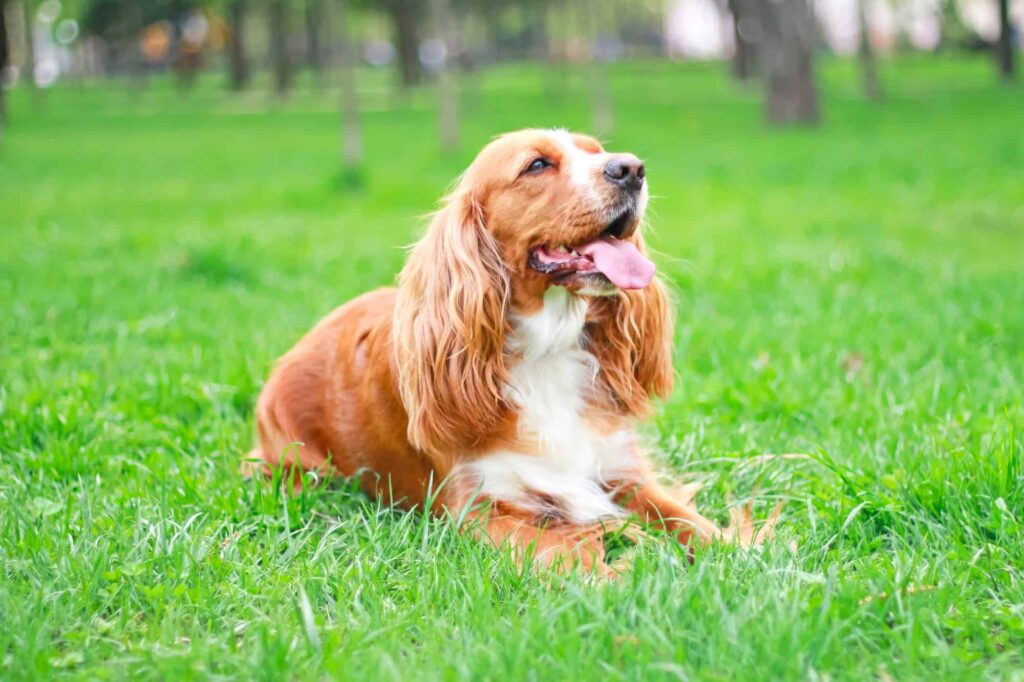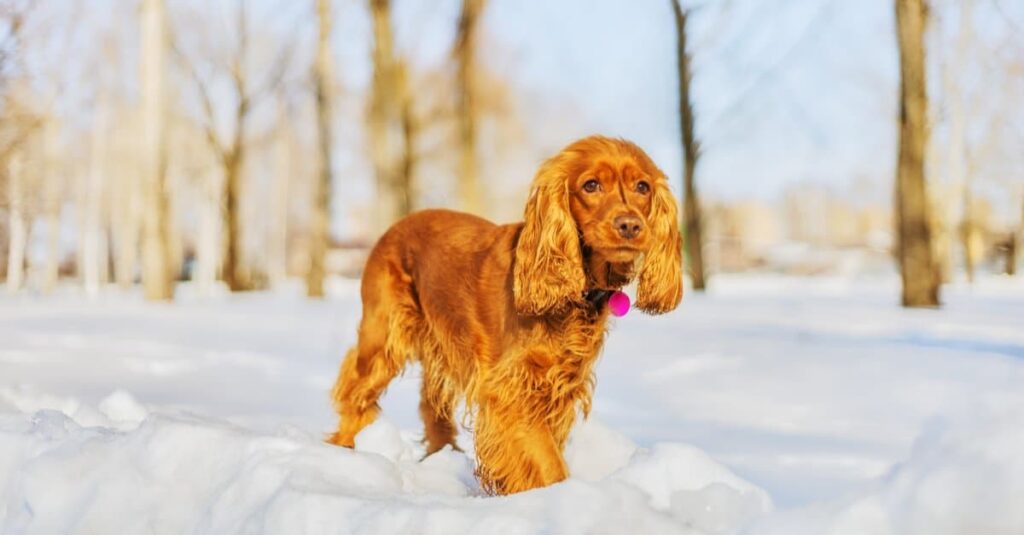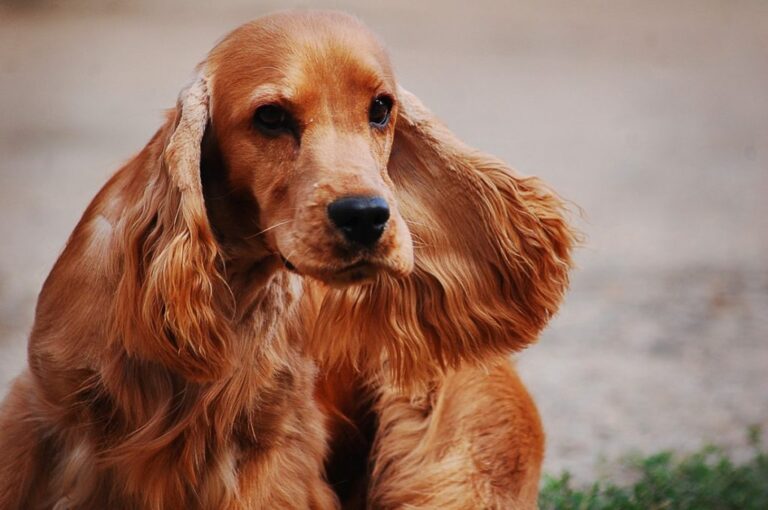You notice the change in the coat all of a sudden. And curious why such a change took place. however, It can be influenced by various factors. Like environmental change, lack of a healthy and balanced diet, Hormonal fluctuations, Seasonal changes, Genetics, breed characteristics, and during their developmental stages, dogs may experience temporary fluffiness as part of their growth process.
Cocker Spaniels are among the most attractive and impressive dogs on the planet. As a devoted owner of a pet, The move could ignite your attention.
In this article, From the outset, you will learn all the reasons of the problem and solutions to maintain a healthy coat. Let’s get into topic.
What are the key characteristics and traits of the Cocker Spaniel breed?

First of all, Cocker Spaniels are medium-sized dogs with luxurious, silky coats, long, pendulous ears, and expressive dark almond-shaped eyes. Furthermore, They are known for their affectionate, gentle, and eager-to-please nature, making them excellent family pets.
As we know, They are intelligent and trainable but require gentle methods for sensitive training. For their flourishing coat, these animals need moderate activity levels, exercise, grooming, and ear cleaning. As well as health concerns like ear infections and eye problems such as cataracts and glaucoma. Regular veterinary check-ups and a balanced diet can help prevent and manage these health issues.
What is the reason of the fluffy coat?
Environment change: Due to intense exposure to factors like sunlight, harsh weather, and pollution. These environmental elements can alter the texture and appearance of their coat. To counteract these effects, it’s essential to provide them with a comfortable and secure living space.
Also, by creating a cozy environment, you can help mitigate the impact of these external factors. This entails ensuring they have adequate shelter from extreme weather conditions and minimizing their exposure to pollutants.
Besides, A safe environment also prevents physical stressors that could contribute to fur fluffiness
Diet and Nutrition: A healthy, balanced diet is important to maintain an ideal and glossy coat. Their fur texture could be impacted by a lack of nutrients like protein, Omega-3 fatty acids, and biotin. In cases where these nutrients are lacking, their absence can manifest in lackluster or coarse fur. These essential vitamins and minerals can be added to their diet to improve it.
Hormonal Fluctuations; Similar to humans, the life of an animal is intricately guided by hormonal processes that regulate various bodily functions. It significant influence on their growth, development, and overall well-being. Among potential factors that can disrupt this delicate hormonal balance, hypothyroidism stands out.
Moreover, This condition, characterized by an underactive thyroid gland, can lead to a range of physiological changes, including alterations in the texture of a dog. Hypothyroidism may trigger shifts in the production and distribution of natural oils in the skin, impacting the fur’s appearance and feel. As the thyroid plays a pivotal role in metabolic functions, any disturbance in its activity can cascade into noticeable changes in the coat.
Seasonal Changes: During the winter these breeds can gain a thicker, fluffier coat to keep warm and comfortable. In summer they shed their winte one and show their sleek beauty once more.
Genetics and Breed Characteristics: Genetics can play a vital role in determining a coat type. It can be a natural trait inherited from the past. If your pet’s parents or origins have a fluffy problem it’s certainly not unusual for your pet to have the same characteristic.
Development stage: As humans, dogs also go through various developmental stages. The way they look can change from puppy to adult, including a fluffy stage. There is no need for the stress it’s usually a temporary phase in their development.
How to spot coat abnormalities?
Excessive Shedding: Even though some shedding is natural, excessive could be a sign of a more serious problem, such as an insufficient diet, allergies, hormone imbalances, or skin conditions.
Dry and Dull Coat: A healthy one will seem shiny and silky. A dry, lifeless one might be a sign of nutritional deficiency or dehydration.
Flaky or Irritated Skin: Dry, itchy, or flaky skin, allergies, parasites, or skin infections can be considered as a cause.
Patchy Hair Loss: Patchy hair loss may be a symptom of several medical conditions, especially allergies, autoimmune diseases, or parasite infestations.
Excessive Oiliness: An overly oily skin might be a problem of a skin condition or an imbalance in the dog’s natural oils.
Mats and Tangles: Neglected or improperly maintained coats may develop mats and tangles, which, if left unattended, can be painful and result in skin issues.
Changes in Coat Color or Texture: Sudden changes in color or texture may indicate a medical condition or nutrient shortage.
Bald patches: A veterinarian should examine bald patches since they may be an indication of some skin disorders, especially if they are accompanied by red or inflamed skin.
Parasites: Since external parasites like fleas or ticks can harm the coat’s health and cause skin issues, keep an eye out for their presence.
Excessive Scratching or Itching: Chronic scratching or itching can be a trait of parasites, skin diseases, or allergies.
If you discover any of these abnormalities in your pet’s coat, you should immediately visit a veterinarian for a full examination and proper diagnosis.
How to Maintain a healthy coat?

Proper Nutrition: Make sure your pet is getting a well-balanced meal that covers all of its nutritional needs. By incorporating foods rich in protein, like lean meats or legumes, along with sources of Omega-3 fatty acids, such as fish or flaxseed, you actively contribute to the enhancement of their structure.
Additionally, biotin, a B vitamin found in certain foods or as a supplement, can notably influence the quality of their fur.
Grooming: Create a regular grooming regimen for your dog. Brushing removes stray hair, avoids matting, and distributes natural oils throughout the coat, resulting in a healthy, fluffy look. Slicker brushes, combs, and de-matting tools aid in the maintenance of their luscious coat and the prevention of tangles
Bath Needed and Ear Care: Bathe your buddy as often as necessary to maintain its coat clean and free of dirt and debris. Use a mild dog shampoo and prevent over-bathing, which can remove the natural oils. Also, Clean their ears regularly to avoid infections and wax accumulation
Maintain Dental Health: Good dental hygiene is essential for your dog’s general health. It can help avoid bad breath and any dental problems that could harm their health.
Parasite Prevention: To keep your dog’s skin and overall safe from fleas, ticks, and other external parasites that could trigger detrimental effects, So, use parasite-prevention medications on a regular basis.
Exercise on a regular basis: Regular exercise not only improves your dogs’ physical health, but it also promotes good circulation and general well-being, which can contribute a healthy coat.
Stress-Free Environment: Reduce stress in your dog’s life, since stress can harm the health. Provide a secure and comfortable living environment, and also try to spend time and give affection.
FAQ
What is the best way to know whether my Cocker Spaniel is purebred?
Purebred dogs frequently come with a “pedigree.” This is the puppy’s ancestry, also known as its family tree. A pedigree will show all of the registered names of the puppy’s ancestors for at least four generations.
Is it allowed to shave a Cocker Spaniel?
Yes, If you want a full shave for simpler grooming, clip his entire body, including his legs and belly. A shave-down is not standard, but it is completely suitable for a companion cocker spaniel. If you prefer a shave, be careful when trimming around the paws and ears.
How do you brush a cocker spaniel’s hair?
Brush a Cocker Spaniel’s hair daily, avoiding mats and tangles, using a gentle slicker brush, and working in the direction of hair growth.
Do you brush your dog’s hair while it’s wet?
No, First bath, and allow it to dry naturally, then use a brush to remove knotted or matted hair, being gentle.
Conclusion
The fluffy and rich coat contributes to its beauty but requires proper attention and maintenance. Understanding all the points like environmental change, genetics, lack of healthy diet and also try to apply all the recommendations such as nutrients, grooming, and exercise to maintain health coat
On the other hand, With love, attention, and adequate care, your Cocker Spaniel will thrive, providing a friendly attitude and loyalty for years to come. Enjoy the pleasures of ownership and cherish the unique moments with these cherished canine friends.

